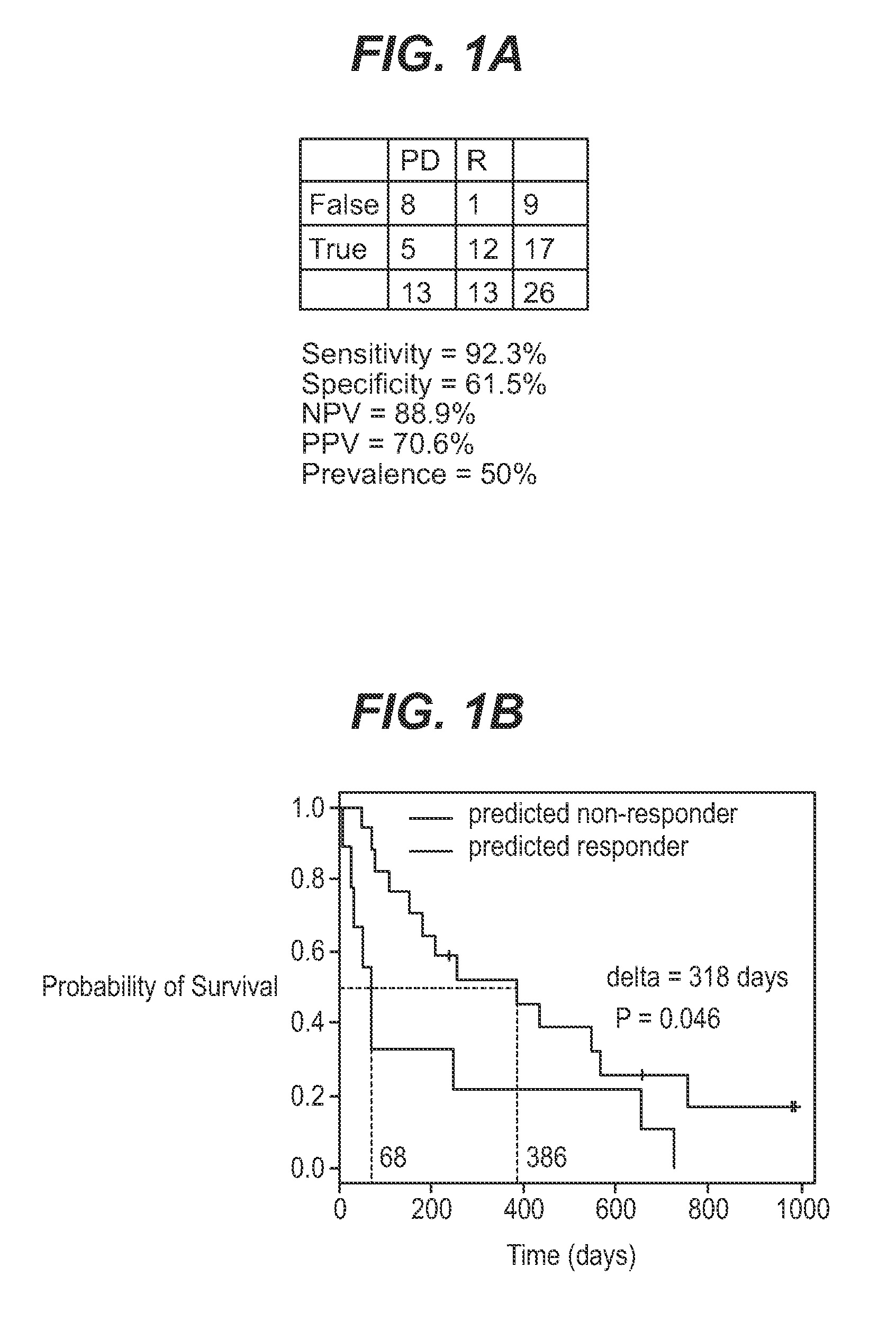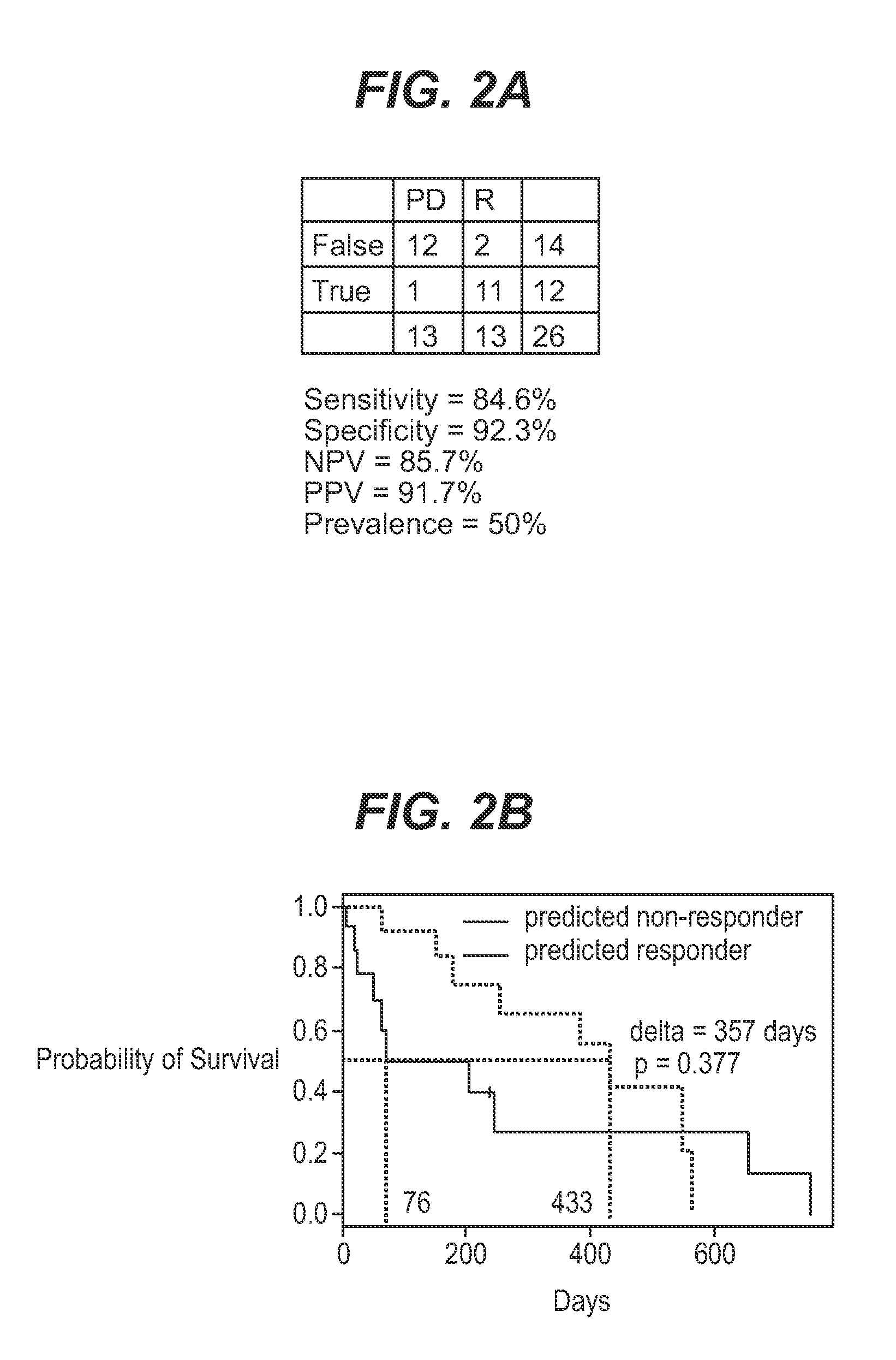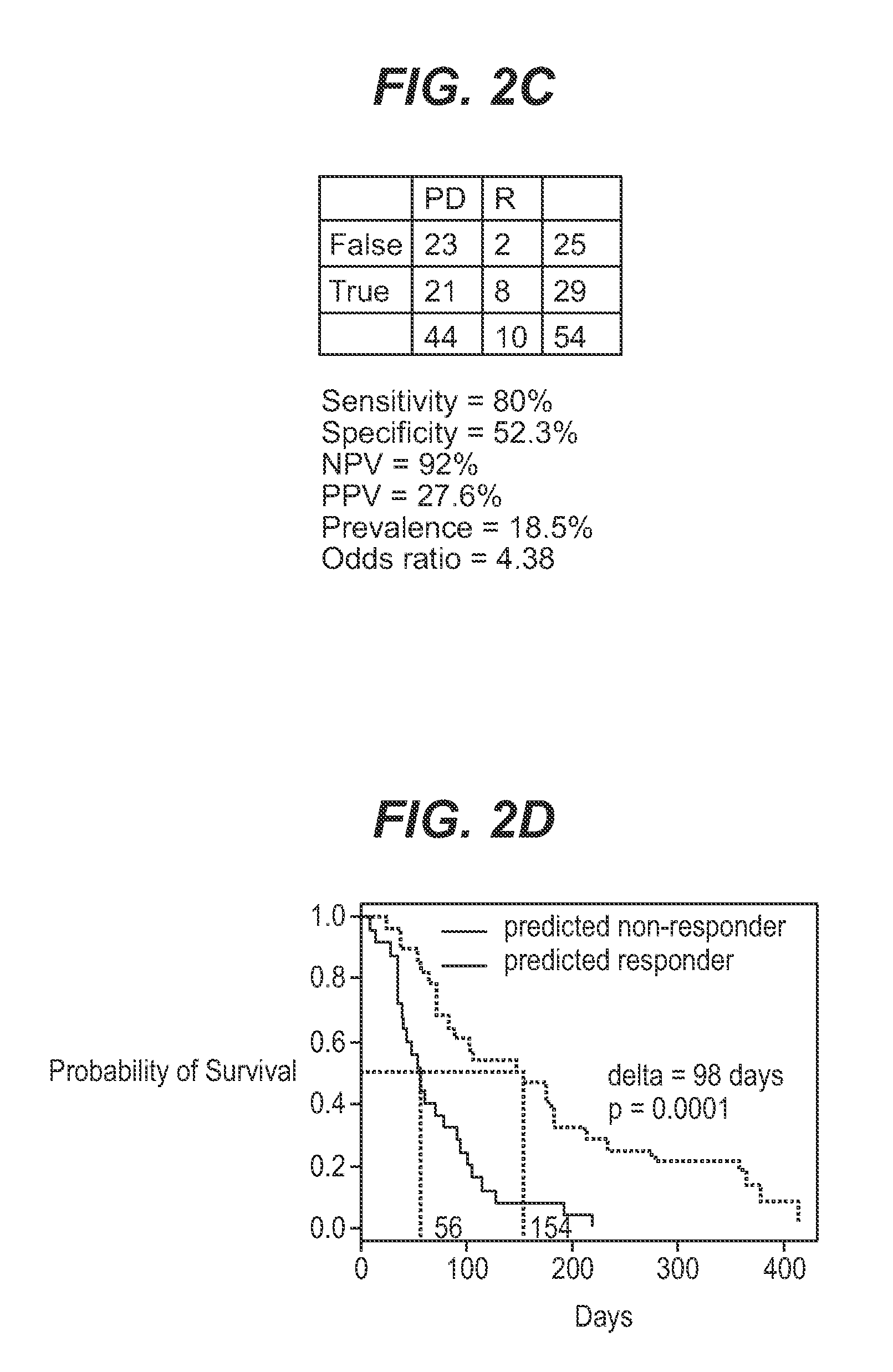Methods of determining acute myeloid leukemia response to treatment with farnesyltransferase
a farnesyltransferase and acute myeloid leukemia technology, applied in the field of methods of determining acute myeloid leukemia response to treatment with farnesyltransferase, can solve the problems of unsatisfactory response rate in those trials, no method available to predict response to farnesyltransferase inhibitors, and inability to prescribe treatment to patients unlikely to respond to them, so as to improve patient overall survival and improve the overall response rate, the effect of patient overall
- Summary
- Abstract
- Description
- Claims
- Application Information
AI Technical Summary
Benefits of technology
Problems solved by technology
Method used
Image
Examples
example 1
Materials and Methods
[0055]The current study utilized 67 bone marrow samples collected from an open label, multicenter, non-comparative phase 2 study investigating the efficacy and safety of farnesyltransferase inhibition with tipifarnib (R115777, ZARNESTRA®) in 158 older adults with previously untreated, poor-risk AML. The clinical results have been published elsewhere. Lancet et al. (2006).
Sample Collection and Processing
[0056]Bone marrow samples were collected from consenting patients before treatment with tipifarnib and mononuclear cells were processed on site. Bone marrow aspirates were diluted with PBS and centrifuged with ficoll-diatrizoate (1.077 g / ml). Enriched leukemic blood cells were washed twice with PBS, resuspended in FBS with 10% DMSO and immediately frozen at −70° C. to −80° C. Total RNA was extracted from cell samples using the Trizol Kit (Qiagen, Santa Clarita, Calif.). RNA quality was determined by assessing the presence of ribosomal bands on a...
PUM
| Property | Measurement | Unit |
|---|---|---|
| pH | aaaaa | aaaaa |
| threshold | aaaaa | aaaaa |
| volume | aaaaa | aaaaa |
Abstract
Description
Claims
Application Information
 Login to View More
Login to View More - R&D
- Intellectual Property
- Life Sciences
- Materials
- Tech Scout
- Unparalleled Data Quality
- Higher Quality Content
- 60% Fewer Hallucinations
Browse by: Latest US Patents, China's latest patents, Technical Efficacy Thesaurus, Application Domain, Technology Topic, Popular Technical Reports.
© 2025 PatSnap. All rights reserved.Legal|Privacy policy|Modern Slavery Act Transparency Statement|Sitemap|About US| Contact US: help@patsnap.com



